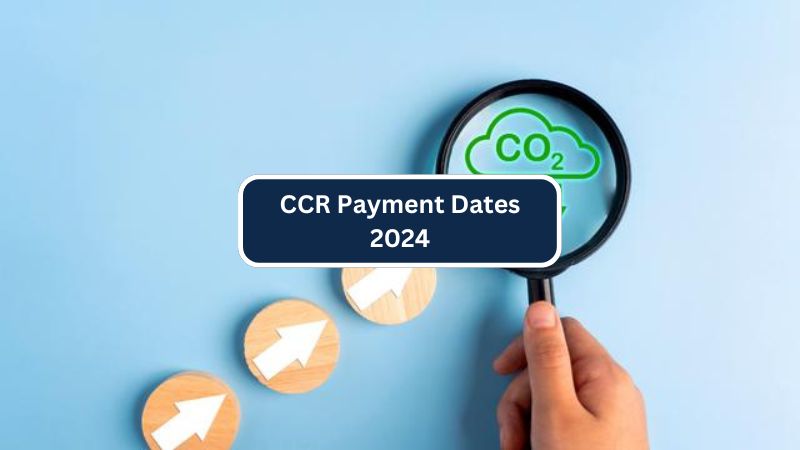Discover everything you need to know about the 2024 Canada Carbon Rebate payments: how much you’ll get, who qualifies, and how to apply. This payment program aims to assist Canadians with the increasing costs associated with the federal carbon pricing plan.
CCR Payment Dates 2024
It’s a tax-free payment given every quarter by the Canadian government to help individuals and families handle the shift to a greener economy more comfortably. This payment aims to reduce the financial impact of federal carbon pricing on eligible Canadians. Keep reading to learn about the 2024 payment dates, how much you’ll get, who qualifies, and more.
The Canada Carbon Rebate, previously called the Climate Action Incentive Payment, helps Canadians manage higher costs from the federal carbon pricing plan. Eligible individuals and families in provinces without their own carbon pricing system receive tax-free payments every quarter to offset these expenses.
So, the Canada Child Benefit (CCR) pays out every three months with four payments each year. Here are the payment dates for 2024:
- April 15th: This was the first payment for the 2024-25 fiscal year. To get it on time, you needed to file your taxes by March 5, 2024.
- June 15th: This is the second payment for 2024.
- October 15th: This is the third payment for 2024.
- January 15th, 2025: This is the final payment for the 2024-25 fiscal year.
These are the payment dates for the Canada Child Benefit in 2024. If you missed the March 5th deadline for the April 15th payment, don’t worry. You can still expect to receive your benefits, but it might take an extra 6 to 8 weeks for the CRA to process your tax return and send the payment.
CCR Payment Payout Amount
The Canada Revenue Agency provides payments on specific dates in 2024 through the CCR Payment Dates program. The amount you receive depends on your income, family size, and living situation.
In 2024, the CCR payment amounts to:
| Province | Individual | Partner | Per Child Under 19 Years | First Child in Single Parent Family |
| Alberta | 225 CAD | 112.50 CAD | 56.25 CAD | 112.50 CAD |
| Newfoundland | 149 CAD | 74.50 CAD | 37.25 CAD | 74.50 CAD |
| Ontario | 140 CAD | 70 CAD | 35 CAD | 70 CAD |
| Saskatchewan | 188 CAD | 94 CAD | 47 CAD | 94 CAD |
| PEI | 110 CAD | 55 CAD | 27.50 CAD | 55 CAD |
| New Brunswick | 95 CAD | 47.50 CAD | 23.75 CAD | 47.50 CAD |
| Nova Scotia | 103 CAD | 51.50 CAD | 25.75 CAD | 51.50 CAD |
| Manitoba | 150 CAD | 75 CAD | 37.50 CAD | 75 CAD |
These are the amounts you get from the CCR Payment, which changes based on your income. People who earn less or have middle incomes get more CCR payment than those who earn more.
| Important Links |
| Pensions and Disability Benefits |
| Stimulus Payment Date |
| Centrelink Direct Cash Eligibility |
| SSS Pension Increase |
If you live in a small or rural community in provinces that have the CCR program, you might also get an extra amount added to your base CCR payment. This extra amount is 20% higher than the usual base amount.
CCR Payment Eligibility
Not everyone in Canada can get the CCR benefit. Here’s what you need to qualify:
- You must be a Canadian citizen before the payment month.
- You live in a province that follows the federal carbon pricing system.
- You should be at least 19 years old by December 31st of the previous year.
- You must have filed a tax return as a Canadian resident.
The amount you receive depends on where you live and how much you earn. Payments are deposited directly into your bank account on the scheduled dates.
How to Claim it?
The Canada Child Benefit (CCR) program makes it easy to claim your payments. You don’t need to apply separately. Just file your income tax return, and if you meet the criteria, the CRA will automatically check if you qualify for CCR.
Here are the important things to know about getting your CCR payment:
- File your taxes on time to receive your CCR payments for the current year. This ensures the CRA has the info they need to determine if you’re eligible.
- If you filed your taxes online by the March 15th deadline, you probably already got your April 15th payment. Keep the CRA updated about changes like getting married or having outstanding taxes.

